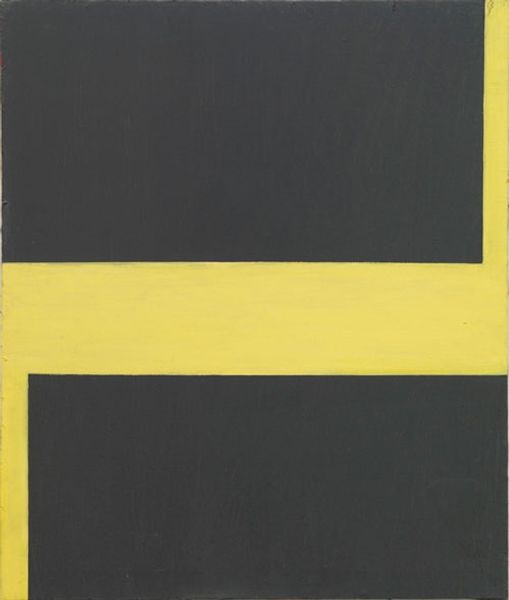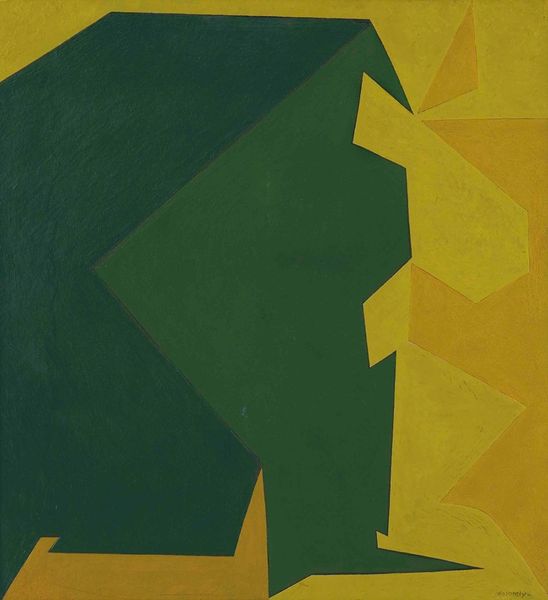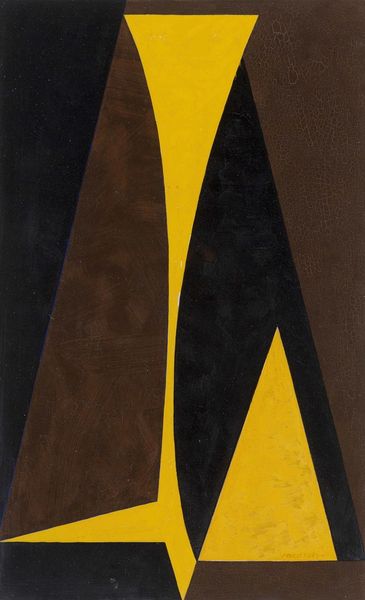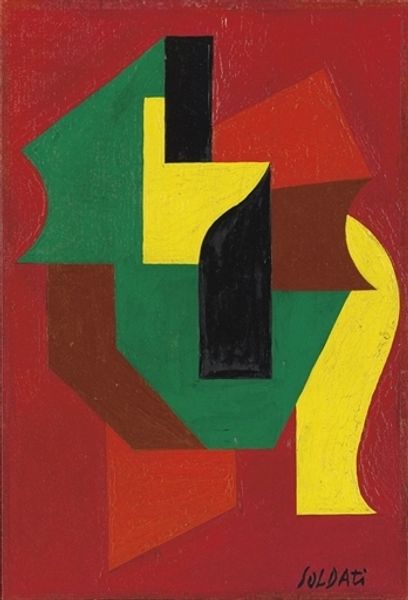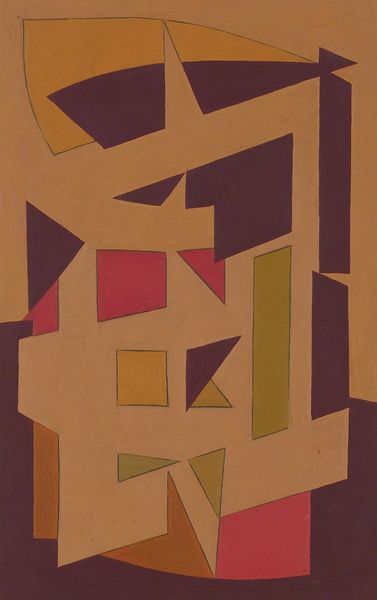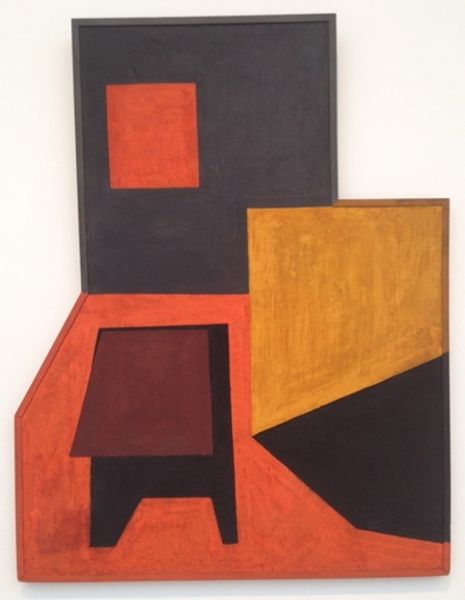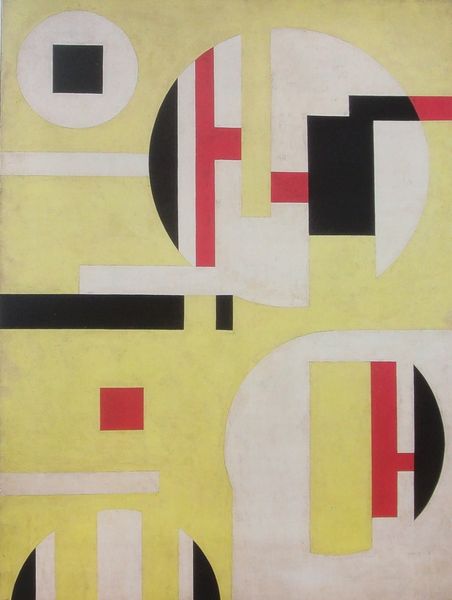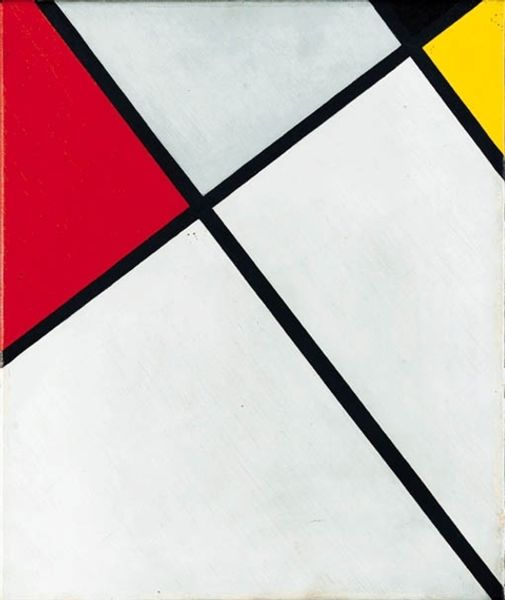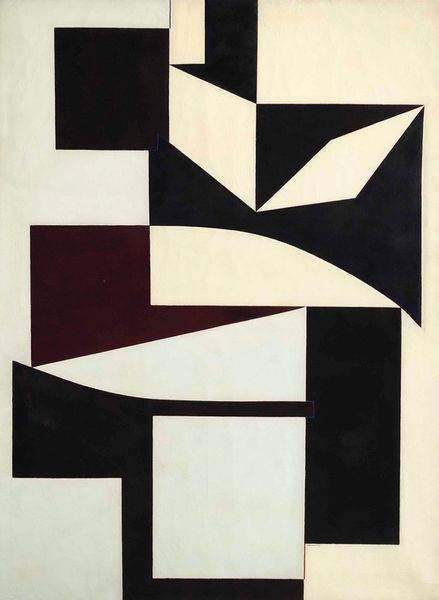
#
op-art
#
op art
#
geometric
#
abstraction
#
hard-edge-painting
Copyright: Modern Artists: Artvee
Curator: Look at this, an electrifying piece by Victor Vasarely, created between 1954 and 1955, titled "Larissa". Editor: It’s striking, immediately grabs your attention! The high-contrast geometric shapes feel almost like an optical illusion, vibrating on the canvas. Curator: Indeed. Vasarely was a key figure in the Op Art movement, which explored visual perception through geometric forms. Here, you can see his masterful control of shape and color to create that effect. But let's consider the materials: the specific pigments he chose, the canvas texture. These elements, often overlooked, are fundamental to the artwork’s presence. Editor: Right, but the *reception* of this piece, shown perhaps in a stark, white gallery space in the late 50s, would have been groundbreaking. Imagine the socio-cultural impact of such bold abstraction during a time when representational art still dominated. The very act of displaying such non-figurative works challenged artistic conventions. Curator: And let's think about the production. The hard-edge painting technique evident here demands a precision of line and form achievable through specific industrial tools and methods becoming prevalent in that era. It connects high art to the broader, changing landscape of manufacturing and design. Editor: Absolutely, and in understanding that socio-political context, we see museums, critics, and even collectors as active agents. Their roles dictate whose art gets seen, which stories get told, and ultimately, shapes our understanding of what is valued as art. Was "Larissa" initially embraced, or did it face resistance? The narrative of its acceptance is crucial. Curator: What fascinates me, stepping back, is this challenge of defining “craft” versus “fine art.” Vasarely embraced repeatable forms, almost like a factory production line, questioning those established hierarchies. Was it painting as commodity? That raises essential questions about the art world itself. Editor: Well, "Larissa" is a window into that cultural moment and that artistic experimentation, sparking discussions even today. I’m left thinking about how we still navigate abstraction and its role in shaping our visual culture. Curator: Me too! It has a profound testament to materiality and artistry during profound cultural change.
Comments
No comments
Be the first to comment and join the conversation on the ultimate creative platform.
